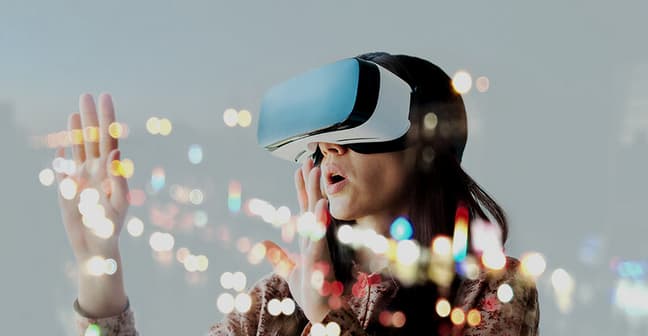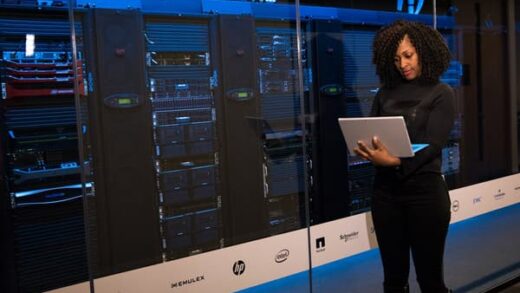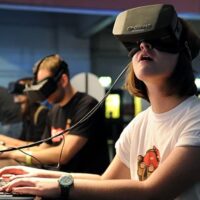Modern gaming consoles open up new horizons for virtual reality (VR) development. Virtual reality technologies combined with powerful gaming platforms allow you to create unique immersive games and applications. In this article, we will look at the possibilities of developing VR games for consoles, the tools used, and the prospects for this area.
VR Capabilities on Consoles
Game consoles provide a convenient ecosystem for VR projects, offering a number of advantages:
1. Simplified Access to VR Experiences
Consoles like the PlayStation 5 with the PS VR2 headset allow gamers to access high-quality VR games without having to purchase expensive PC hardware. The devices are tailored to a mass audience, making it easier to launch projects.
2. Optimization and Stable Performance
Consoles provide fixed hardware and architecture, making things easier for developers. Unlike PCs, where a wide range of configurations must be taken into account, consoles offer stability and predictability in performance.
3. Exclusive gaming features
Console platforms often offer exclusive games and features for VR. For example, the PS VR2 features haptic feedback and eye tracking, allowing for a more immersive experience.
Key tools for developing VR games on consoles
1. Game engines: Unity and Unreal Engine
- Unity: A popular engine for creating VR games due to its flexibility and large developer community. Unity provides tools for working with motion tracking and 360° rendering.
- Unreal Engine: This engine has a powerful graphics core, which makes it especially attractive for creating AAA projects. Unreal Engine supports the development of VR games for PlayStation and offers high-quality visuals.
2. Console SDKs and Tools
- PlayStation SDK: Sony provides dedicated tools for developing games for PS VR2, including libraries for motion tracking and gamepads.
- Xbox Development Kit (XDK): While Xbox does not officially support VR, Microsoft offers tools for integrating with Windows Mixed Reality, which can be used for hybrid solutions.
3. Motion Tracking and Gamepads
The DualSense gamepads and PS VR2 controllers open up new possibilities for interaction in games. These devices can implement haptic feedback and motion tracking, allowing players to better feel their presence in the virtual environment.

Prospects for the Development of VR Games on Consoles
1. Cloud VR Gaming
The future of VR may be associated with cloud technologies. Cloud gaming will allow some of the computing tasks to be transferred to servers, which will reduce the load on the user’s equipment. This can simplify the launch of VR games on consoles and even expand their functionality.
2. Cross-platform projects
Consoles will actively integrate with PCs and mobile platforms. In the future, we can expect users to be able to play VR games on different devices without losing quality and synchronization.
3. Metaverses and social VR spaces
Virtual worlds such as VRChat or Rec Room can become even more popular thanks to support on consoles. This will open up new opportunities for multiplayer games and social interactions in virtual reality.
4. Improving accessories and technologies
In the future, we can expect the emergence of more advanced VR headsets with improved resolution, lower latency, and autonomous functions. This will allow developers to create more complex and realistic games.
Virtual Reality on Consoles: New Opportunities for Developers and Players
Virtual reality (VR) is actively penetrating console systems, offering players a completely new level of immersion. Developers are able to create unique projects thanks to the stable performance of consoles and support for technologies such as motion tracking and haptic feedback. However, like any equipment, consoles that work with VR headsets require regular maintenance. Therefore, the demand for the services of specialized workshops, such as Console Repair Store, is growing, because the failure of consoles and controllers can disrupt the gameplay.
Modern VR games place high demands on equipment. For example, PlayStation VR2 uses advanced rendering technologies and sensors that sometimes require calibration or repair. The availability of repair services helps users not only save on replacing devices, but also maintain equipment in perfect condition.
For developers of VR games on consoles, stable operation of equipment is important to guarantee a high level of performance and comfort for players. Small issues like joystick or tracking issues can have a big impact on your gaming experience.
In the future, as VR technology advances, consoles will integrate with cloud services and metaverses. This opens up even more possibilities for gaming and interaction, but also increases the demands on hardware stability.
Conclusion:
Developing VR games for consoles is a promising direction that already today offers unique opportunities for gamers and developers. Thanks to the use of powerful tools such as Unity and Unreal Engine, and exclusive features provided by consoles, VR projects are becoming more accessible and of higher quality. In the future, the development of cloud technologies and social VR spaces may completely change the way we play and interact with virtual worlds.
Consoles and VR have thus already begun their joint journey to create new immersive entertainment, and this journey promises to be exciting for both players and developers.














